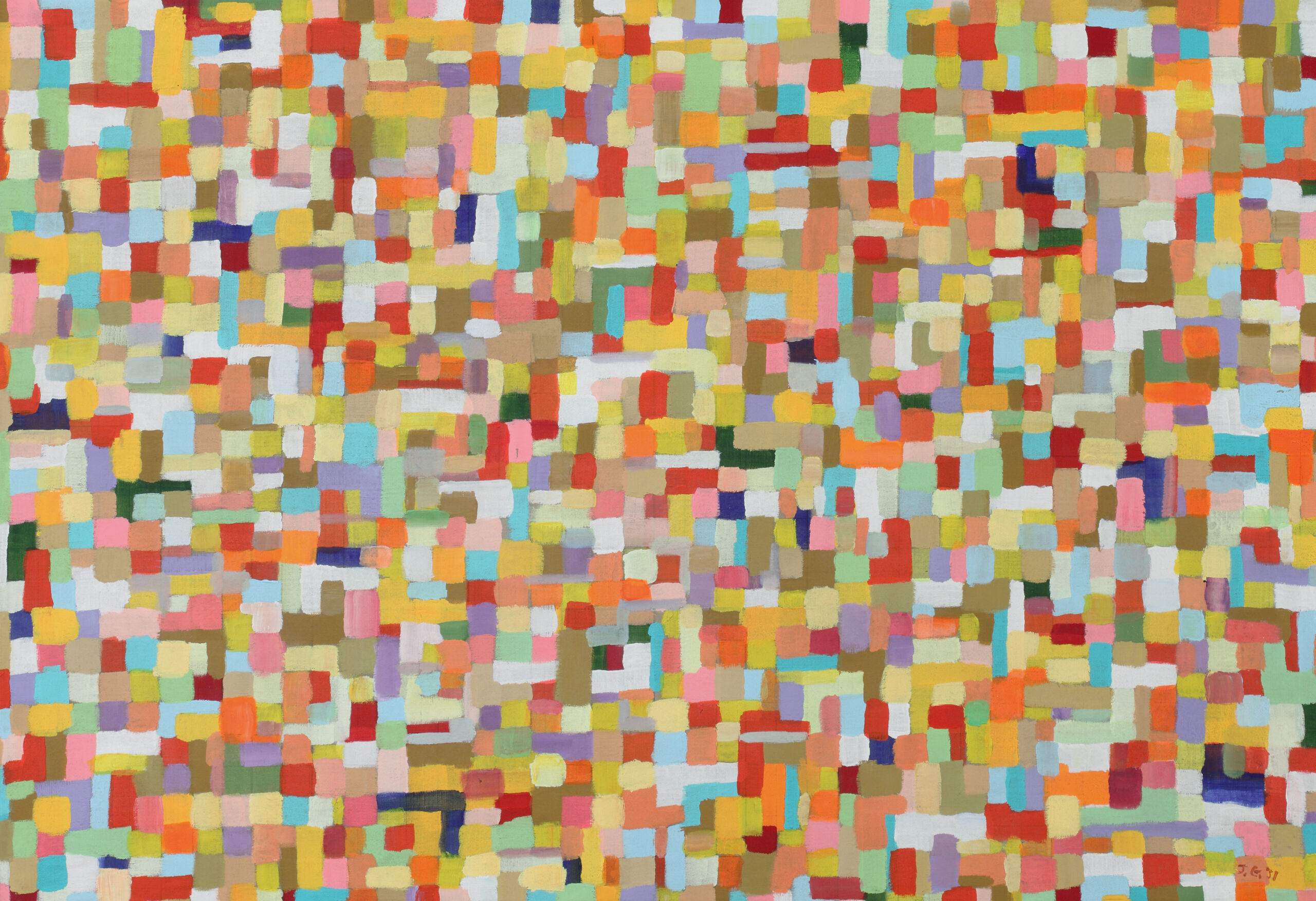—
Pattern Makers
Patterns are all around us. Designs made with stripes, spots and other repetitive motifs often catch the eye, while other patterns are less obvious. Some patterns can even contain coded political messages. This exhibition tracks the presence and meanings of patterns across a selection of works from The Westmoreland’s collection that are not often on view.
Pattern makers may be inspired by nature or by geometry and the patterns they create can be as simple as a brick wall or as complex as a snowflake. A pattern can also be a template for tracing or copying a design, like the pattern for a dress or a quilt. When an artist uses a preexisting image, such as a photograph, as the basis for their work, they too are working from a kind of pattern. By focusing on how patterns are made, this exhibition considers who is and who isn’t recognized for this work. Why, for instance, are abstract patterns by modern painters more highly valued than intricate designs made by anonymous craftspeople for everyday objects?
Curating also involves forms of pattern recognition. To make this exhibition, students from the Department of History of Art and Architecture at the University of Pittsburgh have mined the Museum’s collection storage to discover new relationships between objects, revealing patterns that connect diverse works of different styles and periods.
Curatorial Team: Annie Abernathy, Isaiah Bertagnolli, Alan London, Katie Loney, Janina Lopez, Emily Mazzola, Morgan Powell, Olivia Rutledge, Alex Taylor and Vuk Vuković.
A 3-D model of the exhibition installation is available below.
Also, click here to read our blog post on Pattern Makers.
Laurel Highlands Heritage Happenings Radio Show Podcast:
Hear our Chief Curator Barbara Jones and Professor Alex Taylor from the Department of History of Art and Architecture at the University of Pittsburgh discuss the creation of the upcoming featured exhibition “Pattern Makers” on the Laurel Highlands Heritage Happenings Radio Show Podcast!
Funding for this exhibition was generously provided by the Hillman Exhibition Fund of The Westmoreland Museum of American Art.
